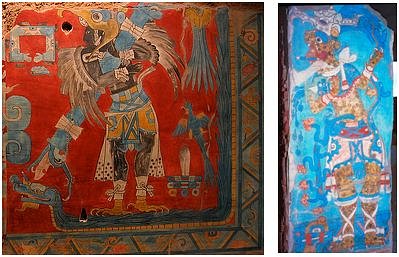



Twenty miles from Tlaxcala are the famous pre-hispanic archeological sites of Xochitecatl and Cacaxtla one of Mexico’s most exciting discoveries. In 1974, tomb robbers came upon a series of brilliantly colored murals decorating the walls of this fortified ceremonial and palace complex. Wonderfully preserved for over a millennia, these images display unmistakable Maya traits, and depict life-size scenes of battle and sacrifice, all still infused with dazzling hues of indigo, ochre, red and black.
Recently, the lower level chamber has been cleared, and its murals appear to be associated with the planet Venus. The room itself is the real “star chamber,” the place where sacrifices were performed on behalf of Venus.
